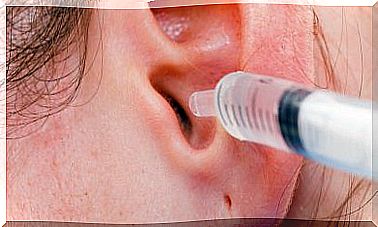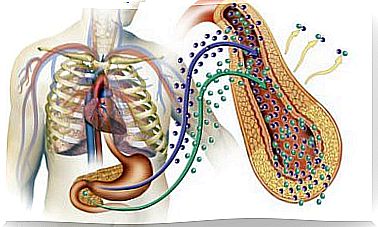How Does Laser Hair Removal Work And What Effects Does It Have On The Skin?
Depilation consists of the elimination of body hair through the use of some substance or technique, temporarily or permanently. The three permanent hair removal methods include laser, intense pulsed light (IPL), and electrolysis. In this article we will explain how laser hair removal works and what effects it has on the skin
Although waxing seems to be a current trend, there is research that indicates that in ancient times it was also a widespread practice. The art shows that in ancient Egypt and Greece there was an idealization of the human body without body hair and that depilation and shaving mechanisms existed to achieve this.
However, throughout history, the idea of body hair has been transformed according to the ideals of the time. Nowadays, there is a tendency to show off bodies free of body hair on the legs, face, chest, armpits, arms and pubis.
Consequently, there are increasingly sophisticated and efficient techniques for long-lasting hair removal. Among the definitive solutions, laser hair removal is the most popular, and more and more men and women are accessing it in order to improve their aesthetics.
How does laser hair removal work?
Laser hair removal is a procedure that uses a beam to remove hair. During this, the device emits a light with a high concentration, whose function is to attack the melanin or pigmentation of the hairs found in the hair follicles. As a result, the heat produced by the light damages these follicles and prevents or delays their growth.
However, for this process to give better results, it is necessary that the hairs have a high level of pigmentation. Therefore, in blonde people the laser may not have the same effectiveness, or more sessions are required. In turn, in people with tanned or dark skin, the emitted light can cause skin damage.
Therefore, special care must be taken when performing this procedure and choosing the type of laser. These are usually classified according to their wavelength and their mechanism. Among the most popular are Diode, Soprano, Alexandrite, Lightsheer, and Neodymium-Yag.
The choice of one or the other depends on the type and pigmentation of the skin. Therefore, it is important to have the advice of professionals to choose the most appropriate according to individual characteristics.

What are its benefits over other methods?
There are many myths surrounding laser hair removal. However, scientific evidence has shown that it is a safe procedure, even though there are risks. Its main benefit compared to the other methods is that it offers a definitive or lasting solution.
Although this treatment does not completely guarantee hair removal forever, it does offer a long-term solution to unwanted hair. If the hairs reappear, it is likely that they will appear in lighter shades and in less quantity.
Another benefit of laser hair removal is that it can be indicated by dermatologists for people with folliculitis and hirsutism problems , a problem of excessive hair growth.
Continue reading: Why do we grow hair in the armpits?
Possible effects on the skin
The American Academy of Dermatology states that laser hair removal can be dangerous when performed by inexperienced people, as it can cause burns, permanent changes in skin color, and scars. Consequently, he recommends doing this type of process with dermatologists who specialize in these treatments.
Although it is generally a safe procedure if applied by experienced people, there are some risks and possible adverse effects. We detail them below.
Itching and discomfort
This is the most common side effect after laser hair removal. It is usually mild, and lasts from a few hours to 3 days. This depends on the type of skin and the area in which the intervention has been made. However, it does not usually require any additional treatment.
Redness and swelling
Since the action of the laser generates heat and burns the hair follicles, it is very likely that the skin will become red and even inflamed for a couple of hours or days. Even the blood vessels can be affected to the point of causing small bleeding and scabs. In any case, it is usually not serious and goes away without the need for treatment.
Changes in skin color
Although it is rare, there is the possibility of discoloration of the skin in the form of spots. However, it is usually not a serious complication and often goes away with time.
Still, it should be noted that there are people who have had this change permanently. Therefore, it is important that a dermatologist analyze your skin type and determine the risks.
Other effects
On the other hand, there are some less frequent effects, which usually occur when it is not in the hands of an expert doctor or the recommendations for treatment are not followed. This covers the following:
- Scars, blisters and burns.
- Infections
- Lesions on the skin.
- Injuries to the eyes when easy hair removal is done and not enough care is taken.
What should I keep in mind before the procedure?
Laser hair removal is not recommended for the eyebrows, as being so close to the eyes can be dangerous for visual health. For this reason, you should discard this process if you are thinking of using it for that area. It also does not work with gray hair.
Before acquiring this procedure it is important that you speak with your dermatologist and ask all the questions that you consider important about costs, estimated treatment time and method used.
It is necessary that you clearly report if you have suffered from any skin problem, have had herpes or if you consume medications, since some generate photosensitivity. Also, the dermatologist will make a series of recommendations to take into account before performing the intervention:
- Do not expose yourself to the sun or tan.
- Avoid other hair removal methods such as waxing or tweezers.
- Avoid some medications such as blood thinners, anti-inflammatories, and certain antibiotics.
- Shave the area to be lasered, to remove long hairs and attack only the root. You must be especially careful not to cause injuries with the razor.

Session results
After the first session, about 10% to 25% of the hair will have been removed. This happens because the laser only attacks the hair follicle in a specific phase of its growth. To obtain the desired results it is necessary to go to several sessions.
After each session, you should follow the dermatologist’s recommendations and avoid exposure to the sun or tanning beds. You will also have to wait 4-6 weeks for another session, as recommended by your doctor. Therefore, the complete treatment can take up to 10 months.
How many sessions are needed?
To completely remove hairs, people usually require 2 to 8 sessions. However, this depends on skin color, hair color and thickness, and the area to be waxed. The type of laser used will also influence the speed of the results.
After treatment, 80% to 90% of the hair is usually removed. Despite this, some hairs may grow back after a few months. Consequently, you may need to do follow-up sessions occasionally, based on medical advice.
Be careful with devices to use at home
After knowing what laser hair removal is all about with its advantages and possible effects, it is likely that you have encouraged yourself to use this treatment. Always remember to go to an aesthetic center that has dermatologists who can guide your process.
You are also likely to find some laser devices to use at home on the market. Before using them, you should take into account some considerations. First, they are less effective than those used by dermatologists, as they have less power.
In addition, it is important that you follow the instructions for use to the letter and do not put them on tattoos, near your eyes or on your genitals. They should only be worn over the bikini line.









